NGC 6357
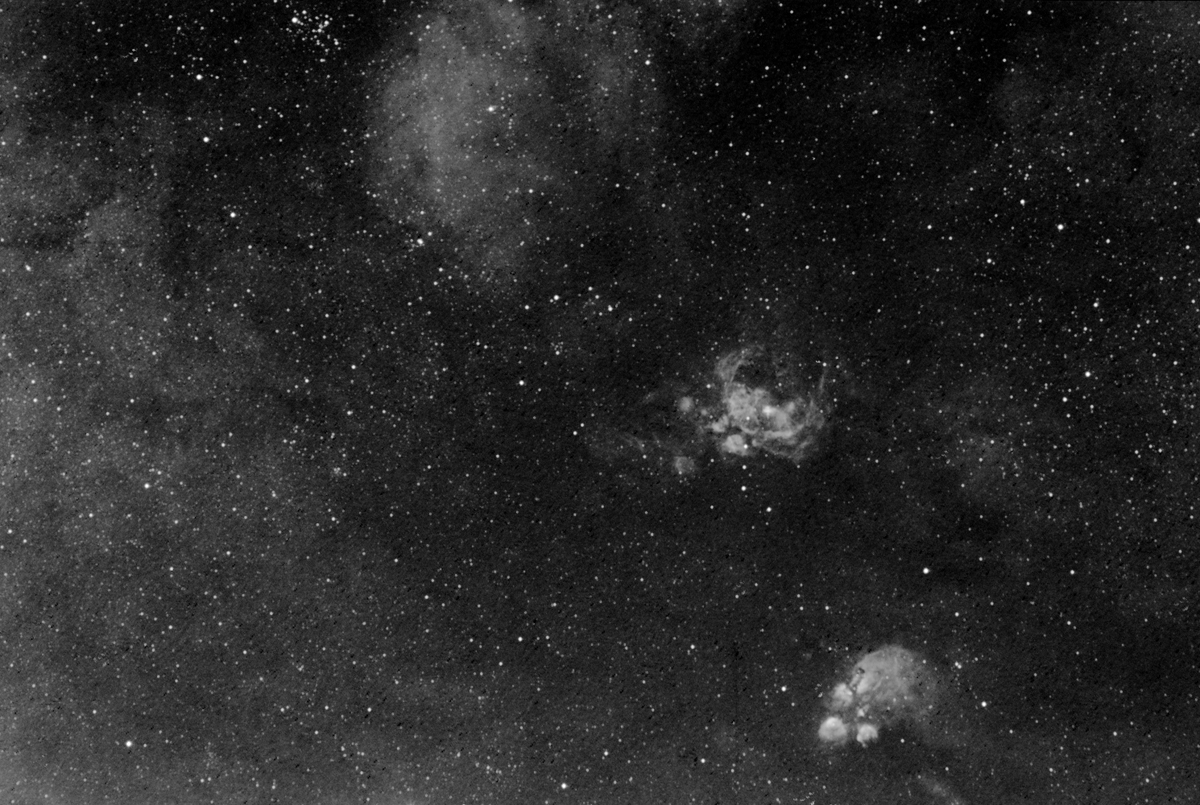
Combination of 60, 1 minute images using an H-alpha filter.
SBIG ST-8XE CCD camera. 100mm f/4 Nikon lens.
Situated near the tail of the Scorpion, not far from the star Shula (the end star in the sting) are two little known nebulae which are easily visible in an 8" telescope. The southern of the two nebulae is NGC 6334, also known as the "Cat's Paw" nebula. The northern one is NGC 6357, displayed here.
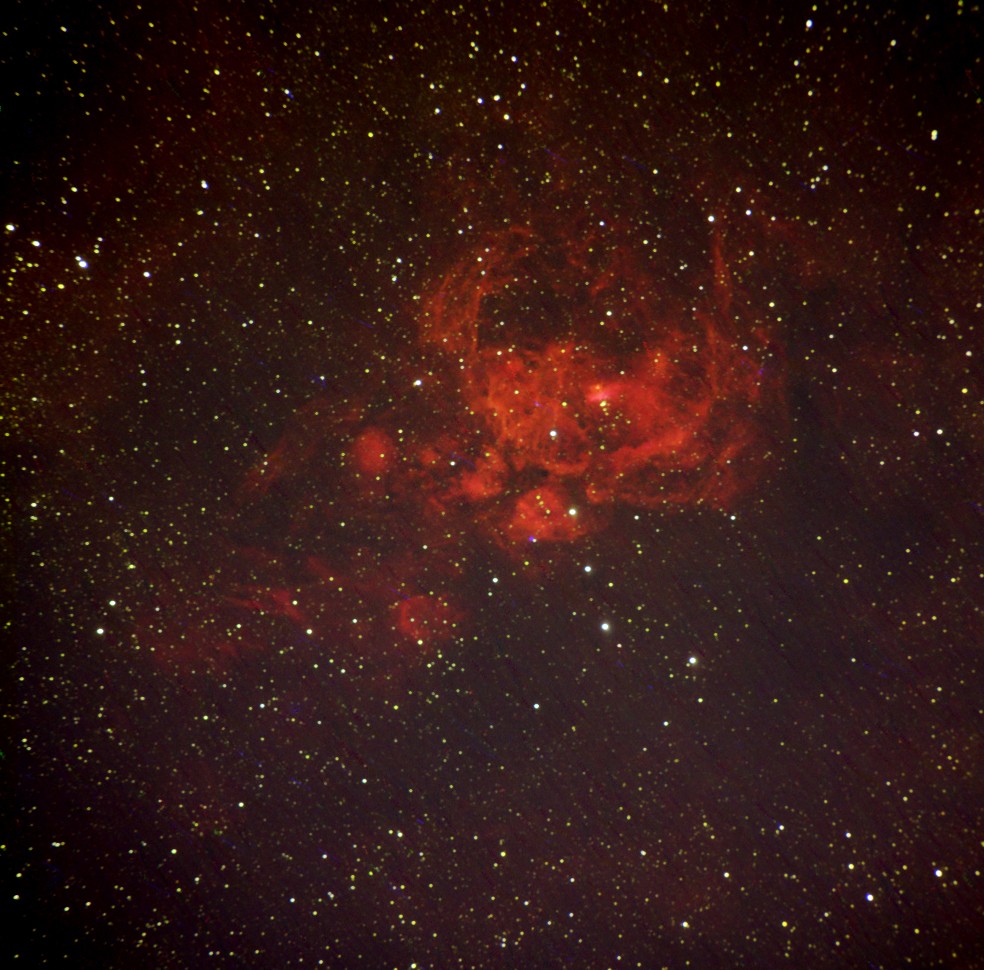
Combination of 45 1-minute images each with an H-alpha filter, an SII filter, and an OIII filter.
SBIG STL-1001E CCD. 5" f/5 refractor at prime focus.
The above image was processed using the H-alpha images as the red channel. This is the preferred palette of the European Southern Observatory. The HST observers prefer to use the SII images as the red channel since the SII line is at a slightly longer wavelength than the H-alpha line. This results in a more green-dominated image as shown below.
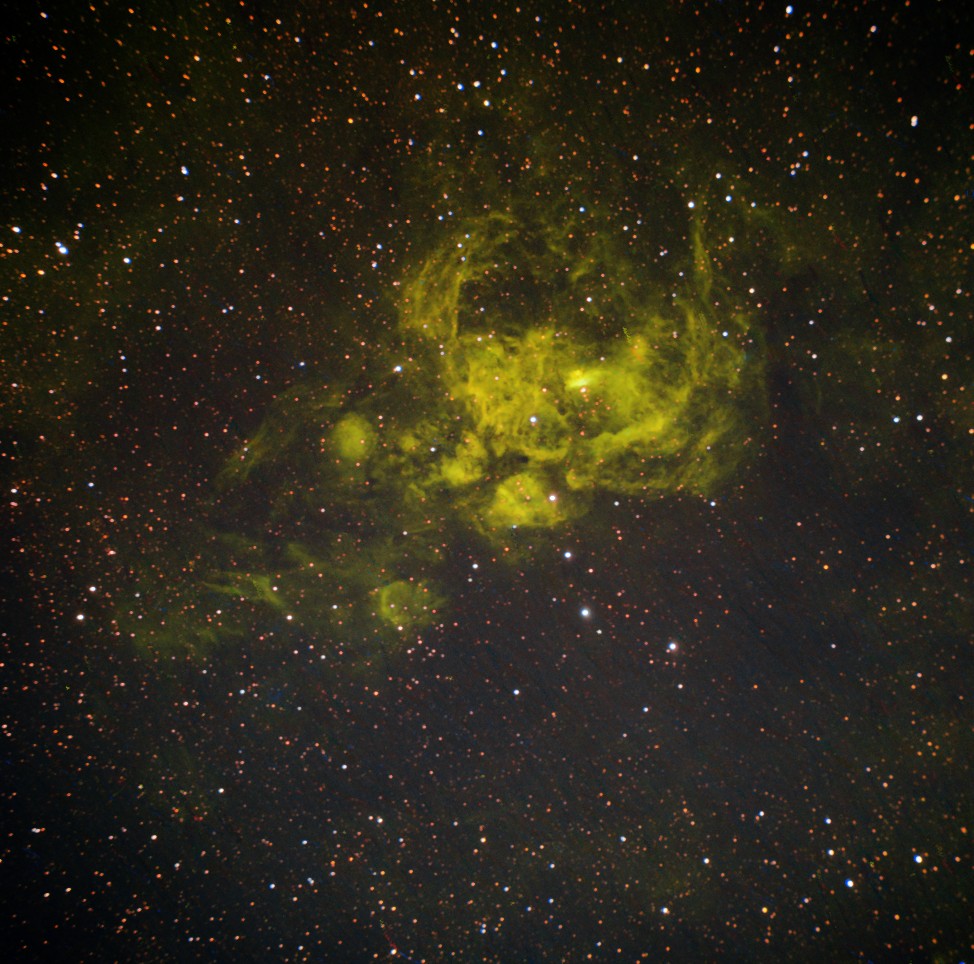
The above image processed using the Hubble Space Telescope palette.
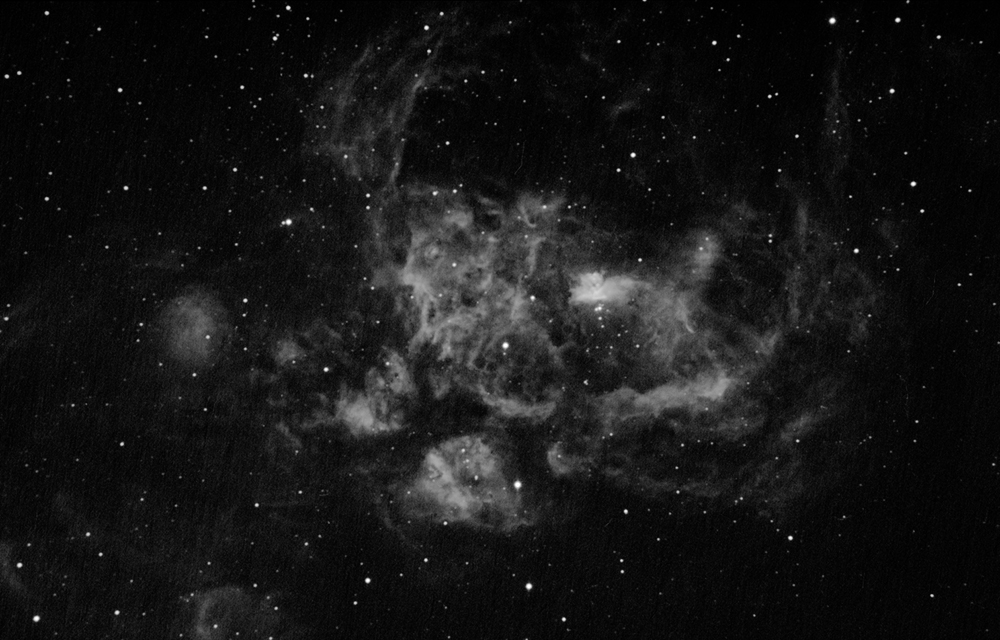
Combination of 10, 3 minute exposures exposures using an H-alpha filter, SBIG ST8-XE CCD camera.
4" f/8 refractor telescope at prime focus.
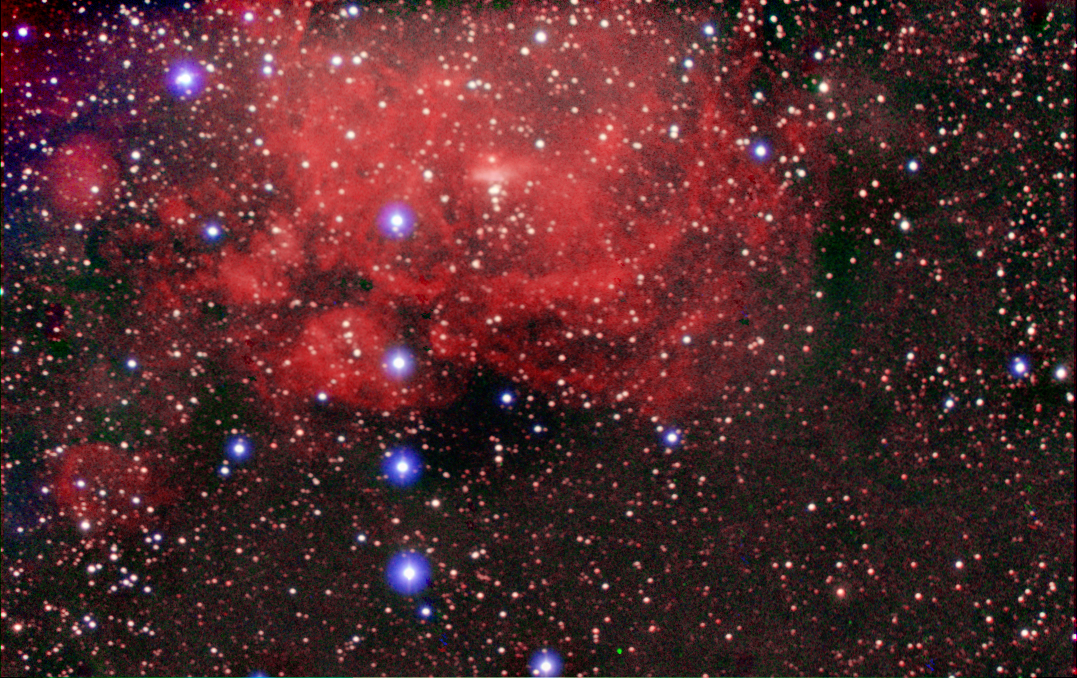
Combination of 60, 1 minute images using red, green and blue filters.
SBIG ST-10XE CCD. 5" f/5 refractor at prime focus.
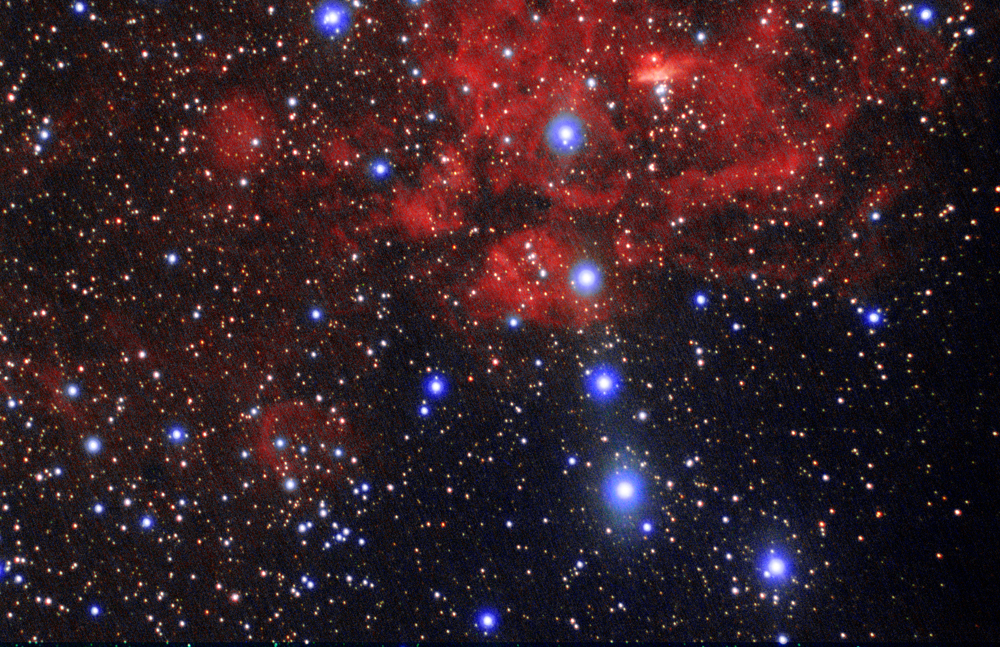
Combination of 10, 3 minute images using red, green and blue filters.
SBIG ST8-XE CCD. 5" f/5 refractor at prime focus.
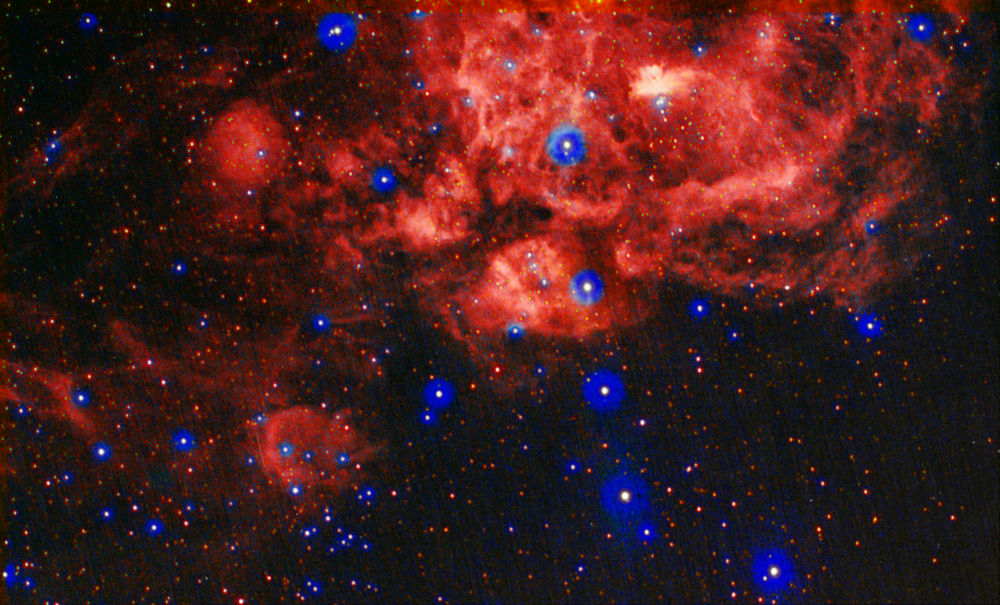
The above image combined with 20, 3 minute images using an H-alpha filter as the luminance layer.
SBIG ST8-XE CCD. 5" f/5 refractor at prime focus.
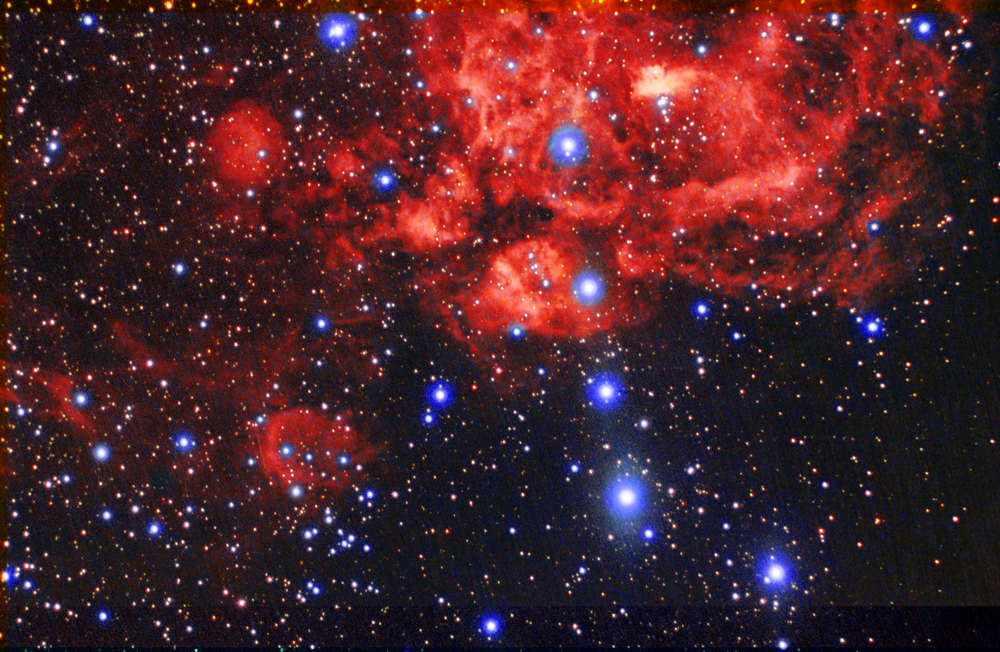
In this image, the H-alpha images have been used as the red channel.








